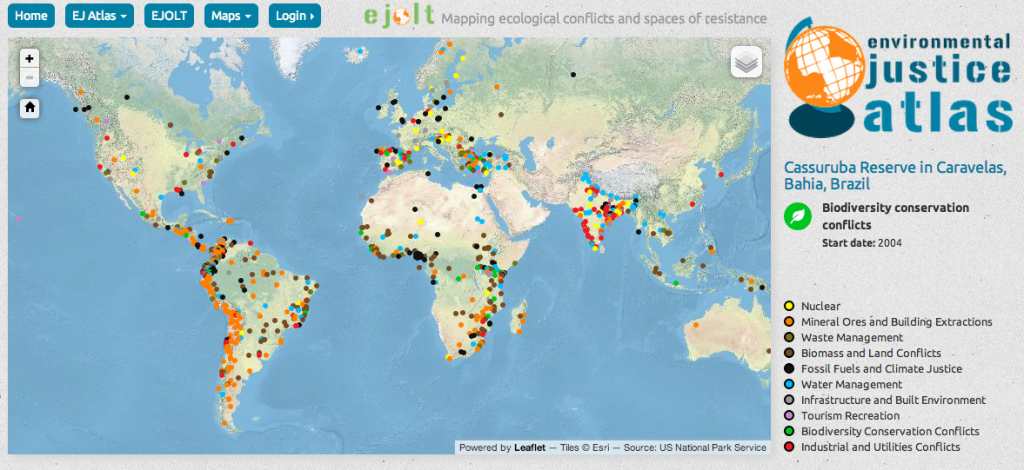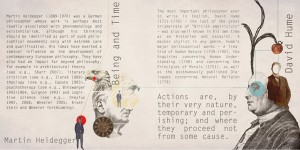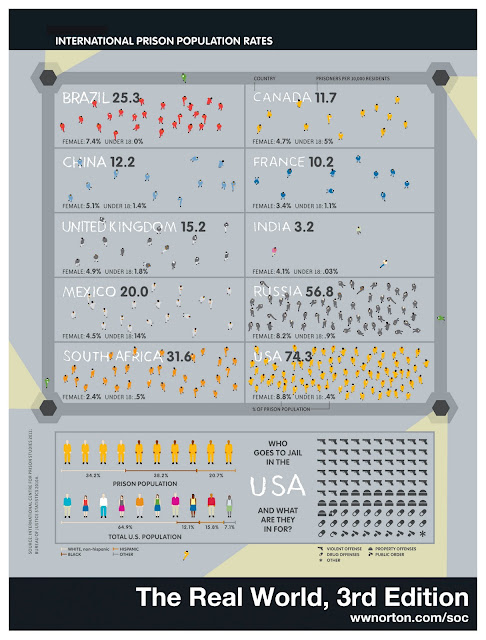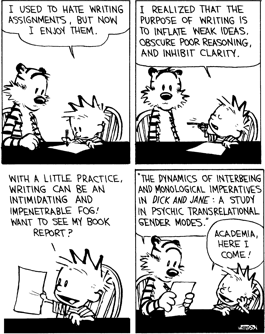The Philographics: Big Ideas in Simple Shapes is a novel, delightful representation of core ideas in philosophy, many of which underpin the research enterprise. For some folks, the images may capture what otherwise takes volumes to explain.
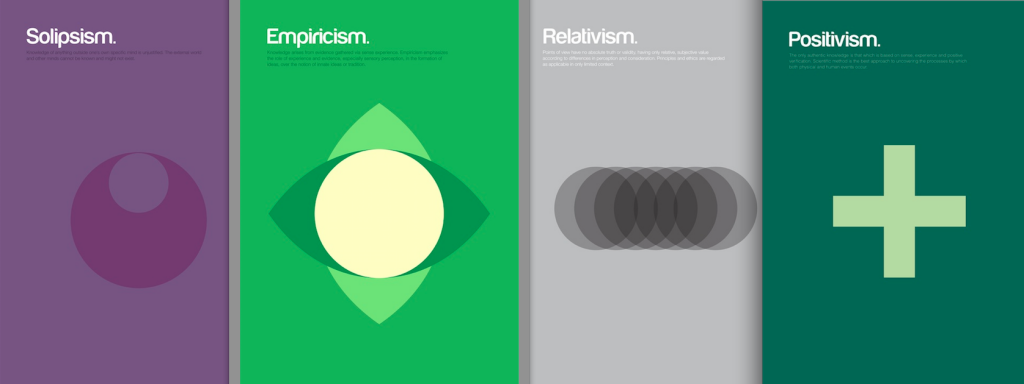
Category Archives: representation
Stories We Tell ~ an introduction to narrative inquiry
We tell ourselves stories in order to live. ~ Joan Didion
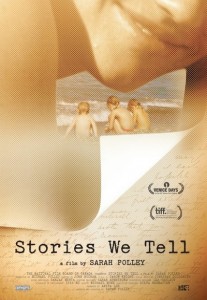 Sarah Polley’s film Stories We Tell is about her mother Diane Polley, or so it seems initially. It is much more than that though. It is an artful alternately weaving and unravelling of narratives of those who share experiences, but, of course, tell their own stories of those experiences. The story unfolds at one level as the story of Diane Polley, a notable Canadian actor (with a daughter who is now both notable actor and director), although the story is more about her personal than professional life. Polley asks each storyteller to “tell the story from the beginning” and she privileges each in the unfolding story that ultimately revolves around the family “joke” that Sarah does not look like anyone else in the family. Individual stories layer and turn back on themselves as that family story becomes a story of its own when Sarah finds out that the man she thought was her biological father is not.
Sarah Polley’s film Stories We Tell is about her mother Diane Polley, or so it seems initially. It is much more than that though. It is an artful alternately weaving and unravelling of narratives of those who share experiences, but, of course, tell their own stories of those experiences. The story unfolds at one level as the story of Diane Polley, a notable Canadian actor (with a daughter who is now both notable actor and director), although the story is more about her personal than professional life. Polley asks each storyteller to “tell the story from the beginning” and she privileges each in the unfolding story that ultimately revolves around the family “joke” that Sarah does not look like anyone else in the family. Individual stories layer and turn back on themselves as that family story becomes a story of its own when Sarah finds out that the man she thought was her biological father is not.
Interviews of siblings, friends, spouses, lovers, and children in Stories We Tell are amazingly intimate and artful illustrations of poignant in-depth interviewing based on difficult questions. The movie is family talking to each other. Everyone misses Diane, and each suffers her loss deeply since she died of cancer when Sarah Polley was 11. The answers offered aren’t simple, and Polley’s own movie narrative reveals the twists and turns in her own story, which is more what the film is about. Some reviewers have called it a love letter to her parents. There are fleeting senses from time to time that the story is told, but then it isn’t and by the time the film ends it is clear there is no end to the story. Ever.
If one were interested in exploring narrative inquiry as a research methodology, this film is about as good a place as any to begin. It illustrates the tensions of truth-telling versus storytelling. It illustrates that all stories have gaps, omissions, and contradictions and within each of those, another story is being told. It illustrates the complexity of whose story is being told. It illustrates the connections and disjunctures between subjective and inter-subjective experiences. It illustrates the role of memory and reenactment in storying life. It illustrates the role stories play in making sense of experience. It illustrates the deeply emotional meaning of stories. It illustrates the human desire to explore what might well be unknowable.
Infographics as data representation
There are ever more good examples of using images to illustrate big data, trends, and connections. A nice example is the Environmental Justice Atlas, an EU project to catalogue “ecological distribution conflicts and confront environmental injustice,” which creates interactive maps of commodities, companies, and types of conflict around the globe.
Epistemology ~ artfully rendered
Julissa Lopez uses collages to illustrate the thinking of those who have deeply influenced the ways knowledge is conceptualized. Kant, Hume, and others’ thoughts are rendered artistically.
The diary of a high school student ~ thinking about representation
The following isn’t from a research project, but in a similar vein to the “The Slow, Costly Death of Mrs. K.” captures Rohan Nuttall’s (a Grade 12 student at Strathcona Composite High School in Edmonton, AB) interpretation of a day in the life of a high school student. The day is marked by time, a linear frame, through which the student moves visually illustrating monotony, distraction, disconnectedness.
The diary of a high-school student: Facebook or chemistry?
8:31 a.m. Wake up. Alarm was set for 6:30. School starts in 15 minutes.
8:35 a.m. Jump out of bed. Head-rush. Pause. Embark on journey to the bathroom. Turn on shower.
8:57 a.m. Step out of shower. Look at the clock. Swear. Look for towel and realize it’s in my room. Swear.
9:08 a.m. Consider eating breakfast. Think about having to take out bowl, find cereal box, find milk, put cereal in bowl, pour milk on cereal, find spoon, lift spoon to mouth multiple times.
9:10 a.m. Decide not to eat breakfast.
9:20 a.m. Anxiously await the arrival of bus. Of course it’s not on time. Blame bus driver for everything. Bus still hasn’t come.
9:20 a.m. Bus comes.
9:59 a.m. Arrive at school. Decide to make the last few minutes of my grade 12 biology class. Realize I have a spare 1st period. Marvel at my dim-wittedness. Forgive bus driver.
10:06 a.m. Bell rings. Realize I’m hungry. At risk of loud stomach rumbling in class decide to get a snack from the cafeteria.
10:10 a.m. Spend $7.00 on a ham sandwich. Get lectured by lunch lady after I question validity of food prices.
10:20 a.m. Still late for class. Give teacher petty excuse–“I was eating breakfast.”
10:45 a.m. Watch teacher spill information over our heads.
11:30 a.m. The all too familiar bell rings for lunch. Students swarm the narrow hallways. It smells like I’m either walking down a perfume aisle or through gym locker room. I can’t quite tell.
11:34 a.m. Get to my locker. Forgot to pack a lunch. Already spent all of my money. Decide to pass the time studying in the library. It’s loud. Kids shouting to each other enthusiastically about how cool GTA 5 is. Ponder the irony of the situation I’m in. There’s a large seagull nonchalantly strolling around in the parking lot.
12:05 p.m. Seagull flies away. Start calculus review. I’ve read the word “derivative” more times than I can remember. What was so wrong with the word “slope”? None of this makes sense.
2:10 p.m. The monotony of the day drags on. Notes. Test. Notes. Test. Worried that I’ll never know the meaning of freedom of interpretation. But hey, at least I’ll have 12 years of practising rote memorization as a life skill. We’re always told that critical thinking is something you do in university. So I guess it makes perfect sense to not bother about it in high school, right?
3:30 p.m. Bell rings for the 13th and last time of the day. Administration thought it would be a good idea to have warning bells. Student autonomy? What a crazy idea.
3:34 p.m. Leave school with bag slightly heavier. 10 pages of chemistry homework even though I know I’m studying economics in university. Useless.
4:05 p.m. Get home. Parents ask how day was. “Fine.” Take dog for a walk. Buckle down to finish homework and study for upcoming tests.
6:00 p.m. Disturbed by parents to eat dinner.
6:50 p.m. Sit down again to study. Phone buzzing every 5 minutes, Facebook messages popping up on laptop screen, music pounding in my ears. It’s no wonder I don’t remember anything I read. Favourite TV show in 10 mins.
7:23 p.m. Sitting on couch in living room. Books on my lap – open – but still only on the table of contents. Fifth time watching this episode.
9:00 p.m. Turn off TV when the news program begins. Head to bedroom. Continue procrastinating.
9:14 p.m. Decide to start chemistry homework. Out of all the questions I’m looking at, the only one that I can think about is “Why do I even have to do this?” What’s the point in homework? Sure, I get that silly yet oddly fulfilling completion mark, but what about the meaningful application? Instead, I’m just spending my time ingraining all of this information in my head for a stupid test at the end of the week only to forget it all on the bus ride home. Doesn’t seem like a very sustainable pedagogical model for the 21st century. So much for saving trees, too.
9:30 p.m. Feeling frustrated. Decide to get ready for bed.
9:36 p.m. Go to bed.
12:34 a.m. Stop texting. Fall asleep.
1:20 a.m. Set alarm for next day.
6:30 a.m. Wake up to alarm. Get ready for school.
7:00am It’s Saturday. Swear.
Meet The Somalis ~ illustrated stories of Somalis in seven cities in Europe
You might have just seen Captain Phillips, the movie starring Tom Hanks as the real life Captain Phillips, commander of a Maerck shipping freighter hijacked by Somali pirates. The movie gives a wee glimpse into the life of Somali pirates, and the circumstances in their home country related to piracy. But, of course, to be Somali is something quite a bit larger.
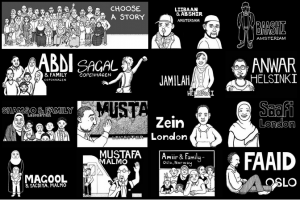 Meet the Somalis tells the stories of 14 Somalis living the refugee or immigrant life in seven European cities. Based on interviews, “the illustrated stories focus on challenges faced by Somalis in their respective cities in Europe and issues raised in the Somalis in European Cities research, including education, housing, the media, employment, political participation, and identity. Meet the Somalis depicts experiences many of us will never know, like fleeing a warzone with your children or, worse, leaving your loved ones behind.”
Meet the Somalis tells the stories of 14 Somalis living the refugee or immigrant life in seven European cities. Based on interviews, “the illustrated stories focus on challenges faced by Somalis in their respective cities in Europe and issues raised in the Somalis in European Cities research, including education, housing, the media, employment, political participation, and identity. Meet the Somalis depicts experiences many of us will never know, like fleeing a warzone with your children or, worse, leaving your loved ones behind.”
Like most ethnographic research, the stories are not just windows to the experiences of others, but also mirrors reflecting our own values and the deep interconnections among all people, like the importance of family, well-being, and identity. The cartoon illustrations combined with interview excerpts build the narrative of experience as an immigrant and/or refugee connected to a war-torn homeland.
Using film clips for teaching
The Sociological Cinema is a website of film clips that can be incorporated into teaching about a wide range of sociological topics. Videos are usually available on YouTube or some other site and might be clips from popular TV shows/movies, or made specifically as videos on a topic.
The site has a search function, and you can submit suggestions for videos, resources and assignments to be added to the site. Just a couple examples are:
Cultural jamming…
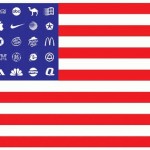
Norm breaching…
There isn’t a huge amount of content on the site yet, but it has a lot of potential.
Love a good infographic… especially one with a good point
Some helpful references on writing & publishing
Allison, A., & Forngia, T. (1992). The grad student’s guide to getting published. New York: Prentice Hall.
American Psychological Association. (2009). Publication manual of the American Psychological Associations (6th ed.). Washington, DC.
Becker, H. S., & Richards, P. (2007). Writing for social scientists: How to start and finish your thesis, book, or article (2nd ed.). Chicago: University of Chicago Press.
Bridgewater, C. A., Bornstein, P. H., & Walkenbach, J. (1981). Ethical issues in the assignment of publication credit. American Psychologist, 36, 524-525.
Clifford, J. & Marcus, G. E. (1986). Writing culture. Berkeley, CA: University of California Press.
Frost, P. J., & Taylor, M. S. (Eds.). (1996). Rhythms of academic life: Personal accounts of careers in academia. Thousand Oaks, CA: Sage.
Fuchs, L. S., & Fuchs, D. (1993). Writing research reports for publication: Recommendations for new authors. Remedial and Special Education, 14(3), 39-46.
Geertz, C. (1989). Works and lives: The anthropologist as writer. Boston: Polity Press.
Klingner, J. K., Scanlon, D. & Pressley, M. (2005). How to publish in scholarly journals. Educational Researcher, 34(8), 14-21.
Matkin, R. E., & Riggar, T. F. (1991). Persist and publish: Helpful hints for academic writing and publishing. Niwot, CO: University of Colorado Press.
University of Chicago Press. (2003). The Chicago manual of style (15th ed.). Chicago: University of Chicago Press.
Strunk, W. J., & White, E. B. (2005). The elements of style (3rd. Ed.). Boston: Allyn & Bacon. [NOTE: Treat yourself and get the edition illustrated by Maira Kalman.]
Truss, L. (2004). Eats, shoots and leaves: Why, commas really do make a difference! New York: Gotham.
Wolcott, H. F. (2008). Writing up qualitative research (3rd edition). Thousand Oaks, CA: Sage.
Visualizing poverty through data representation
Hans Rosling’s TED presentation is an excellent example of how visualizing knowledge can challenge our stereotypes and taken for granted common nonsense. While the presentation utilizes large scale data bases to create the graphs, it is still an instructive example illustrating the importance of visualization and dynamic data presentation.

 Follow
Follow

